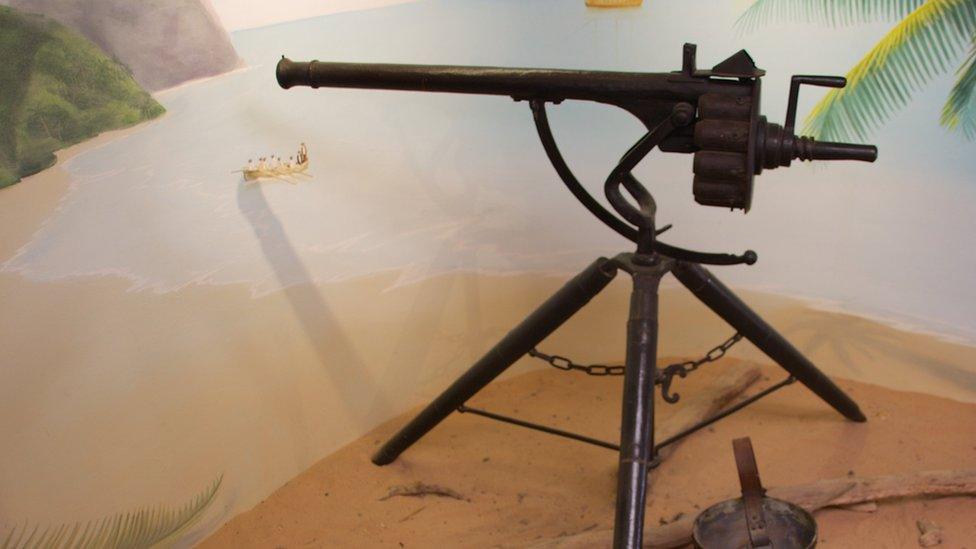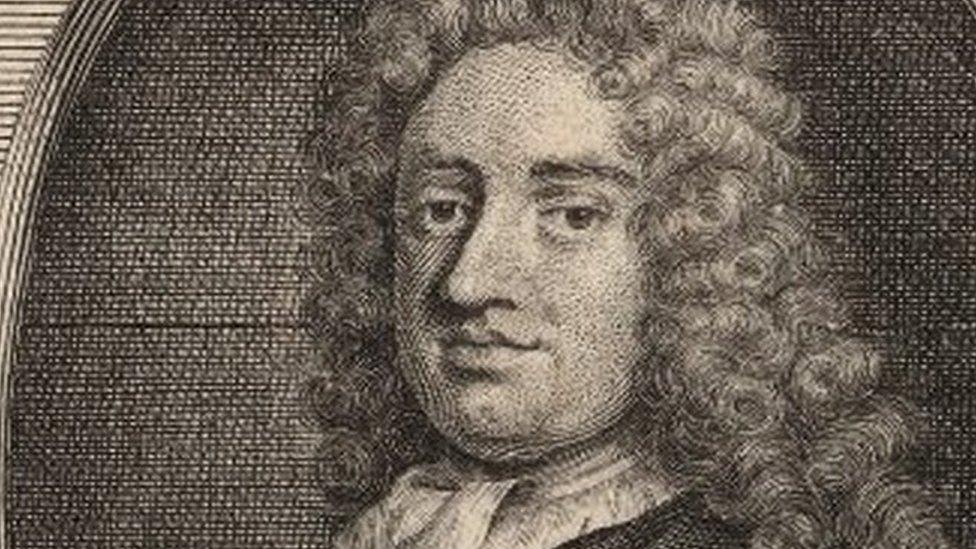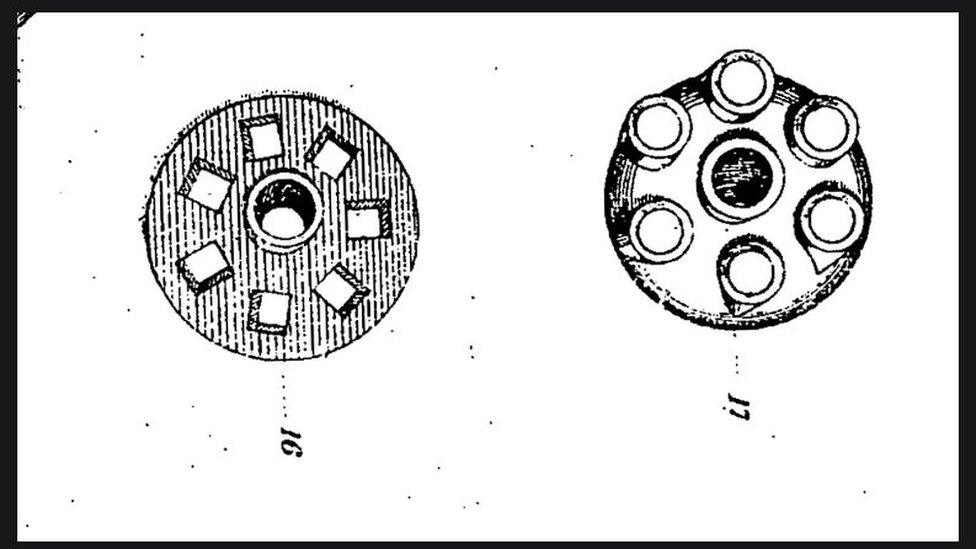The Assassin's Creed gun designed to fire square bullets at Turks
- Published

A replica Puckle gun can be seen at Buckler's Hard Maritime Museum in Beaulieu, Hampshire
The first machine gun, patented 306 years ago, was the brainchild of a lawyer, inventor and writer from London, James Puckle.
He was a keen fisherman and intended to use his weapon at sea - and as a side effect he believed the gun would "convince the Turks of the benefits of Christian civilisation".
However, despite being the only British-born person to have designed a machine gun, Puckle is more likely to be known for his published work, a dialogue between father and son on the evils of intemperance, and as an obscure footnote in a 2014 videogame.
Puckle designed his gun to fire both round and square bullets - the round ones he planned to shoot at Christians and the square, which he believed would cause greater injury, were reserved for marauding Turks.
Puckle's animosity toward Turks stemmed from fear of the Ottoman Empire.
By the turn of the 18th Century, the Ottomans controlled much of southeast Europe, western Asia and north Africa, and were engaged in a series of wars with European powers.
The Turks, with vessels too fast to be effectively stopped by broadside cannon, could board and raid ships with relative ease.
So Puckle invented a single-barrelled flintlock weapon fitted with a multi-shot revolving cylinder. It was a basic step toward the automatic weapon.

James Puckle was author of works including The Club - a conversation between a father and son on the evils of intemperance
It was mounted on a tripod and was portable. While a musket could be loaded and fired three times a minute, the Puckle gun fired nine shots a minute.
The gun had nine chambers which revolved on a spindle, and by a lever under the barrel each chamber could be forced home into the breech.
Puckle, widely considered to be a man of high and obvious morality, also had a motto engraved on the barrel of the gun reading:
DEFENDING KING GEORGE YOUR COUNTRY AND LAWES
IS DEFENDING YOURSELVES AND PROTESTANT CAUSE.
Pleased with his gun, Puckle took it to Woolwich for the government to assess - and possibly add to its armoury.
In 1717 it underwent trials but was rejected for government use, one reason being that the flintlock mechanism was too unreliable.
The unimpressed Board of Ordnance found it inferior in fire rate to earlier repeating weapons, some of which fired up to six times faster.
The board described it as "clumsy and unreliable".

Square bullets could be made to work in the gun as well as traditional rounded ones
Undeterred, Puckle patented his weapon and three years later set up a company to market his machine.
He held several demonstrations - but his company did not fare well, despite an enthusiastic write-up in the London Journal in March 1722.
"Wednesday sennight (week) last was a performance of Mr Puckle's Machine - and it is reported for certain that one man discharged 63 times in seven minutes, though all the while it was raining. It throws one large or 16 musket balls at every discharge with great force.
"Even if Puckle had several cylinders ready for replacements, the mere priming of each touch-hole during continuous rain and discharge with this rapidity is little short of marvellous.
"It is remarkable that this invention was not carried further, for only two examples were made, one a crude experimental gun of iron, and the other the finished article in brass."

When shares were put on the market by Puckle, a review rather cruelly said of the product: "It only wounded those who have shares therein."
Could there have been a glimmer of hope for Puckle and his weapon? The Duke of Buccleuch and Queensberry bought two guns for an expedition in 1722.
He planned to capture St Lucia and St Vincent and appointed a Captain Uring deputy-governor, and sent him out with seven ships containing settlers and their families.
The French were having none of it though and landed a body of troops from Martinique to oppose him. Capt Uring was compelled to agree to leave St Lucia within seven days.
A similar attempt to obtain a footing in St Vincent's was opposed by the inhabitants, and also ended in failure.
The Puckle guns were never used.
There was an unusual renaissance for the Puckle gun - in the 2014 video game Assassin's Creed: Rogue, four Puckle guns were part of the weaponry on the protagonist's ship.
They were, however, modified from the original design. They were less clumsy and unreliable.

Listen to the best of BBC Radio London on Sounds and follow BBC London on Facebook, external, X, external and Instagram, external. Send your story ideas to hello.bbclondon@bbc.co.uk